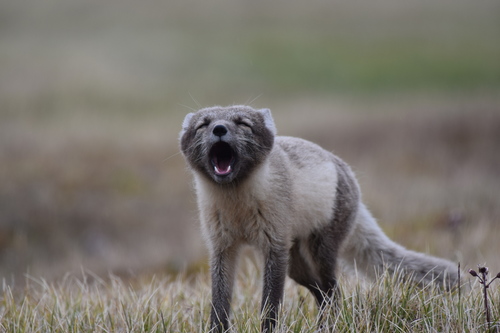
Arctic Fox
The Arctic fox's fur changes seasonally, providing camouflage in snowy winters and rocky summers. This adaptable predator thrives in Arctic tundra, showcasing resilience and resourcefulness. Its role in controlling rodent populations underscores its ecological importance.
7-10 years
Lifespan
1.4 - 9.4 kg
Weight
Length: 70 - 110 cm
Size
Grey, Black, White
Color
30 mph
Top Speed
Least Concern
Conservation Status
Stable
Population Trend
Characteristics
The Arctic fox (Vulpes lagopus) is known for its thick, warm fur, which changes color with the seasons—from white in winter to brown or gray in summer. It inhabits Arctic tundra regions, where it is well-adapted to extreme cold. Notable for its keen hunting skills, it preys on lemmings and other small animals.
Distribution Range of the Arctic Fox
The Arctic fox (Vulpes lagopus) is native to the Arctic regions of the Northern Hemisphere. It is primarily found in the tundra regions of North America, Europe, and Asia, including countries such as Canada, Greenland, Iceland, Norway, Sweden, Finland, and Russia.
Arctic Fox's Habitat
Environmental Conditions
The Arctic fox inhabits cold, polar environments characterized by extreme temperatures, often below freezing, and covered in snow and ice. This species is well-adapted to the Arctic tundra, which features a treeless landscape with low vegetation such as shrubs, grasses, and mosses. The climate is harsh, with long, cold winters and short, cool summers.
Ecological Niche
Arctic foxes occupy the ecological niche of a carnivore and scavenger in the Arctic ecosystem. They primarily feed on small mammals like lemmings and voles, but their diet is highly opportunistic, including birds, eggs, insects, and carrion. During the summer, they may also consume berries and seaweed. Their thick fur provides insulation against the cold, and they are known for their ability to survive in some of the most frigid environments on Earth.
Copyright @ Nature Style Limited. All Rights Reserved.
 English
English